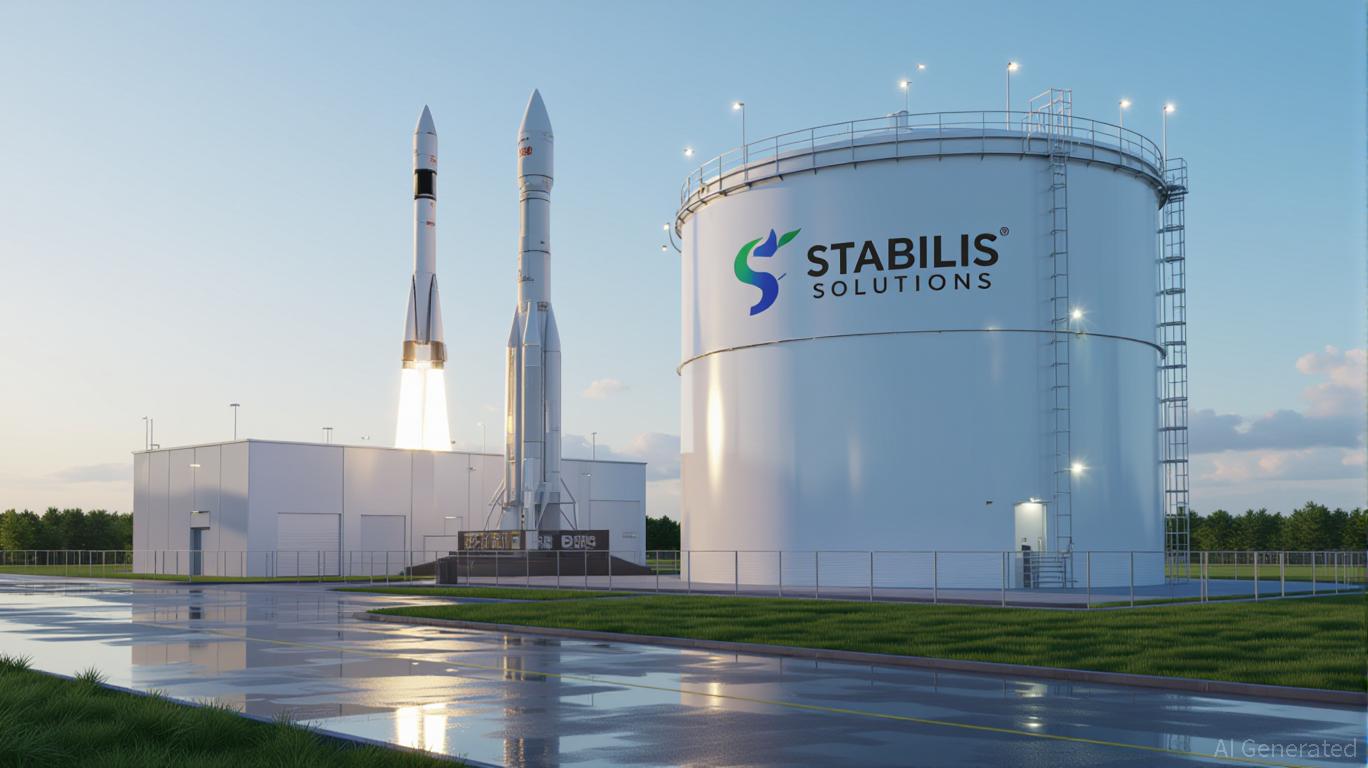
The small-scale liquefied natural gas (LNG) sector has long been a niche player in the energy transition, but Stabilis Solutions Inc. (NASDAQ: SLNG) is positioning itself to redefine its role. With a strategic rebalancing of its business operations and capital allocation in 2025, the company is betting big on high-margin markets like aerospace and commercial space. The question now is whether this pivot represents a genuine inflection point for long-term growth—or a high-risk gamble in a sector still finding its footing.
Strategic Rebalancing: From Industrial Contracts to Aerospace Dominance
Stabilis’ Q2 2025 earnings call revealed a dramatic shift in its revenue mix. While total revenue declined 7% year-over-year to $17.3 million, the aerospace segment surged by 83% YoY, now accounting for a significant portion of the company’s 77% revenue share from high-growth markets (up from 62% in Q2 2024). This shift is no accident. Management has explicitly prioritized aerospace and commercial space applications, leveraging its expertise in LNG production to supply rocket propellant for commercial launches.
The U.S. commercial space sector is accelerating, with companies like SpaceX and Blue Origin ramping up launch activity. Stabilis is capitalizing on this trend by positioning itself as a preferred provider of clean, cost-effective LNG solutions for propulsion and testing. The company’s George West, Texas facility expansion—aimed at boosting LNG storage and logistics—further underscores its commitment to scaling infrastructure for these markets.
Capital Allocation: Balancing Growth and Prudence
Stabilis’ capital allocation strategy in 2025 reflects a disciplined approach to growth. Year-to-date capex of $1.2 million is being directed toward infrastructure upgrades and capacity expansion, particularly in aerospace and marine bunkering. This includes the Gulf Coast liquefaction project, which is being underpinned by multi-year off-take agreements.
The company’s liquidity position is robust, with $16.1 million in combined cash and credit availability as of June 30, 2025. This flexibility allows Stabilis to fund infrastructure while maintaining a strong balance sheet. CFO Andy Puhala emphasized that the company is leveraging its existing network of 30+ U.S. liquefiers to source LNG efficiently, ensuring flexibility as new projects come online.
However, the trade-off is evident. While aerospace revenue is growing rapidly, the segment’s contribution to profitability remains opaque. Stabilis’ adjusted EBITDA margin fell to 8.6% in Q2 2025 from 11.3% in Q2 2024, partly due to a non-recurring charge and a shift toward lower-margin markets. Investors must weigh whether the long-term potential of aerospace justifies near-term margin compression.
Sector-Specific Growth: Aerospace as a Catalyst
The aerospace segment’s 83% YoY revenue growth is a standout, but its true potential lies in its alignment with broader industry trends. LNG is increasingly seen as a cleaner alternative to traditional rocket propellants, and Stabilis’ turnkey solutions are tailored for mission-critical applications. Management’s focus on securing long-term contracts—such as a two-year marine bunkering agreement for 22 million gallons annually—highlights its strategy to stabilize cash flows and fund further expansion.
Yet, the lack of segment-specific profit margins or ROI projections for aerospace remains a gap. While the company’s overall gross margin of 27.5% (LTM) suggests operational efficiency, investors must infer aerospace’s profitability from the broader context. The key will be whether Stabilis can scale its aerospace operations without sacrificing margins, a challenge that could test its capital discipline.
Financial Health and Risk Factors
Stabilis’ liquidity and operational cash flow ($4.5 million in Q2 2025) provide a buffer against short-term volatility. However, the company’s reliance on one-time industrial contracts has waned, and its future depends on sustaining growth in aerospace and marine. Risks include regulatory shifts in LNG adoption, competition from larger players, and the cyclical nature of commercial space launches.
Investment Thesis: A High-Conviction Bet
For investors with a long-term horizon, Stabilis’ strategic rebalancing offers compelling upside. The company is capitalizing on a structural shift in the energy transition—cleaner fuels for aerospace and marine—while maintaining financial flexibility. Its focus on long-term contracts and infrastructure expansion aligns with industry tailwinds, and the Gulf Coast project could be a catalyst for revenue diversification.
However, the absence of clear ROI metrics for aerospace and the near-term margin pressures mean this is not a low-risk investment. Investors should monitor contract progress, particularly for the Gulf Coast liquefier, and assess whether Stabilis can maintain its liquidity while scaling operations.
Conclusion
Stabilis Solutions is at a pivotal moment. Its strategic pivot to aerospace and commercial space applications has already driven revenue growth, but the true test lies in translating this momentum into sustainable profitability. With a strong balance sheet, disciplined capital allocation, and a clear vision for the future, SLNG could emerge as a leader in the small-scale LNG sector. For now, the inflection point remains a possibility—but one worth watching closely.
